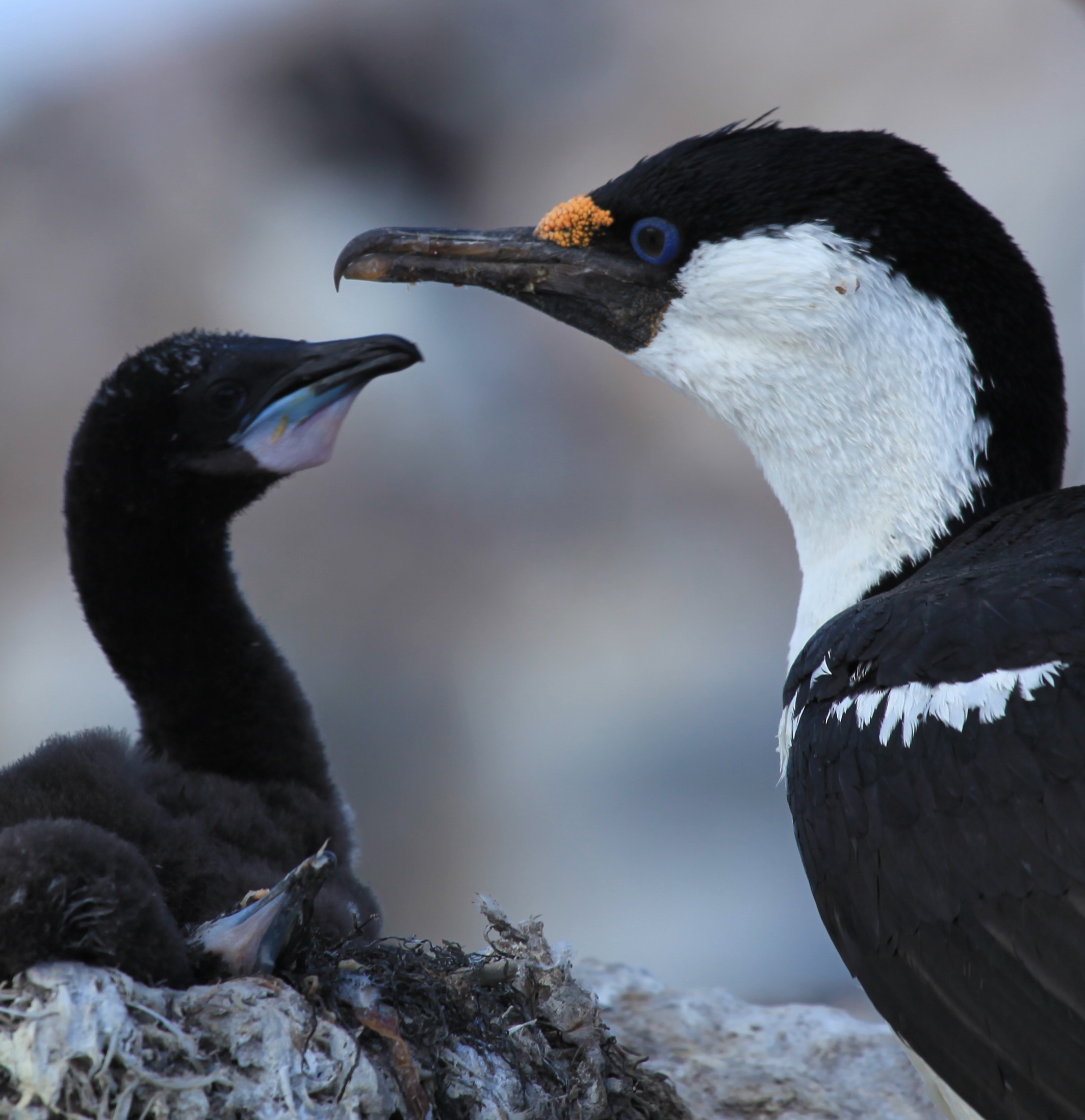Antarctic shag
The Antarctic shag (Leucocarbo bransfieldensis), is a marine cormorant native to the South Shetland Islands and the Antarctic Peninsula in the Southern Ocean.
Genus and distribution
The Antarctic shag is one of the blue-eyed shags, sometimes placed in the genera Leucocarbo, and a subspecies of the imperial shag. Others place it in the genus Phalacrocorax. It is often treated as a full species.
The blue-eyed shags are a group of closely related cormorant taxa. All have a blue, purple or red ring around the eye (not a blue iris); other shared features are white underparts (at least in some individuals) and pink feet.
They are found around the colder parts of the Southern Hemisphere, especially near southern South America, Antarctica, and New Zealand. Many are endemic to remote islands. Determining which types are species and which are subspecies of what larger species is problematic; various recent authorities have recognized from 8 to 14 species and have placed them in a variety of genera. The common names are even more confusing, "like myriad footprints criss-crossing in the snow and about as easy to disentangle."
Behavior
Antarctic shag are fish-eaters. They dive from the surface, though many other species make a characteristic half-jump as they dive, presumably to give themselves a more streamlined entry into the water. Under water they propel themselves with their feet, though some also propel themselves with their wings. Some cormorant species have been found, using depth gauges, to dive to depths of as much as 45 meters.
Wing-drying behavior
After fishing, cormorants go ashore, and are frequently seen holding their wings out in the sun. All cormorants have preen gland secretions that are used ostensibly to keep the feathers waterproof. Some sources state that cormorants have waterproof feathers while others say that they have water permeable feathers. Still others suggest that the outer plumage absorbs water but does not permit it to penetrate the layer of air next to the skin.
The wing drying action is seen even in the flightless cormorant but commonly in the Antarctic shags and red-legged cormorants. Alternate functions suggested for the spread-wing posture include that it aids thermoregulation, digestion, balances the bird or indicates presence of fish. A detailed study of the great cormorant concludes that it is without doubt to dry the plumage.
Cormorants are colonial nesters, using trees, rocky islets, or cliffs. The eggs are a chalky-blue color. There is usually one brood a year. The young are fed through regurgitation. They typically have deep, ungainly bills, showing a greater resemblance to those of the pelicans, to which they are related, than is obvious in the adults.
